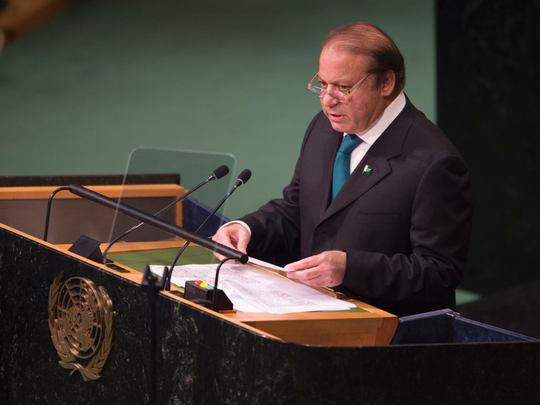
Amid rapidly mounting tensions between India and Pakistan, hawks on either side quickly entered into the fray, predicting a likely victory for their respective sides in any future armed conflict.
That India with its larger economy and a larger military force could prevail over Pakistan was the outcry from many who spoke in New Delhi’s support. On the other hand, that Pakistan as the world’s only Muslim country armed with a sizeable arsenal of nuclear weapons could easily win the day was the counter-argument from Islamabad’s supporters.
But the risks to each of the two south Asian neighbours and by default the risks to global security interests were easily ignored in the heat of the moment. For both India and Pakistan, the recent sabre-rattling notwithstanding, the dangers are indeed much more grave than just being very troublesome.
Each of the two countries now own enough nuclear weapons to be able to destroy the other many times over — and be still left with enough firepower to fight on if there are still any people left after what is certain to be destruction on an unimaginable scale.
The risks posed by the two countries are also considerable in view of an often-ignored but nevertheless powerful reality. Never before in history has there been a case of two nuclear-armed neighbouring countries locked in a historically acrimonious relationship, notably over the division of the mountainous state of Kashmir. In their almost 70 years of history as independent states, the generation of migrants who were part of history’s largest human movement of its kind in 1947 has moved on to be succeeded by a next generation or two whose members have had no experience of living in colonial India.
And yet, the anger and bitterness at the political level have fuelled recurring military conflicts between the two nations in the past. Indian cinema has a large following in Pakistan and some of Pakistan’s past TV dramas gained viewership in India. Yet, politicians on either side of the border are busy browbeating the other side — all for popularity. It is therefore often surprising to non-South Asians to see the kind of bitterness aimed at each other in India and Pakistan, though the people of the two countries share a lot in common in terms of language, culture and food habits.
In this background, and given the risks of an all-out war between the world’s two newest nuclear powers, it is vital to address the root cause of the conflict, which is embedded in the division of the predominantly Muslim state of Kashmir. Indian Kashmir has been under curfew for almost three months now and more than 100 protesters there have been killed while at least 10,000 have been injured. The use of vicious methods by the police, notably pellet guns, to quell protests have blinded scores of demonstrators.
The other side of the story, however, is equally troubling. The latest round of tensions from the past week was triggered when four militants attacked an Indian Army camp in Uri — Indian Kashmir — and killed 18 soldiers. The attack was immediately followed by claims from the Indian government that the militants came from Pakistan as part of Islamabad’s long-running policy of backing militant groups.
Verifying this claim independently will be easier said than done, especially given that access to Kashmir is practically forbidden to independent observers such as members of human rights groups and representatives of the United Nation’s Military Observers’ Group in India and Pakistan.
But instead of getting locked in a never-ending saga of point-counter point, it is essential for both India and Pakistan to work towards swiftly beginning a new peace initiative over Kashmir. More than 10 years ago, when Pakistan was ruled by former president General Pervez Musharraf and India was led by its former prime minister Atal Bihari Vajpayee, the two sides were widely known to have worked out the outlines of a new road map to peace. The details, as much as they were let out essentially, called for New Delhi and Islamabad to allow freedom to Kashmiris in territories under the control of each other for cross-border visits with relative ease. At the same time, the formula called for more authority on decision-making locally. There were efforts to achieve sizeable demilitarisation on either side so that the Indian and Pakistani militaries could step back from a practically eyeball-to-eyeball presence in Kashmir.
Those discussions for the first time created a ray of hope for one of the world’s longest-running disputes to finally head towards resolution. Amid the tensions of today, it is essential for both India and Pakistan to return to the table for dialogue and work out a road map to peace based on past progress.
There are clearly other localised disputes between the two countries where progress can and must be made. One of the most futile of such disputes is the long-running battle over the Siachen glacier in Kashmir where Indian and Pakistani forces face each other. Often described as a high-cost military venture in a practically barren land with no human habitation in sight, the Siachen dispute has time and again been predicted to be close to a resolution. Yet, that resolution has never really happened.
It will be in the interest of both the countries to bring a degree of maturity to the table and break the logjam of historical disagreements once and for all. Going to war will neither be a mature nor sensible decision for one of the world’s most densely-populated regions.
Farhan Bokhari is a Pakistan-based commentator who writes on political and economic matters.









